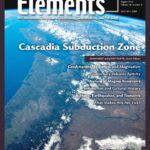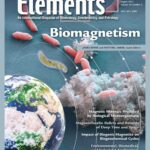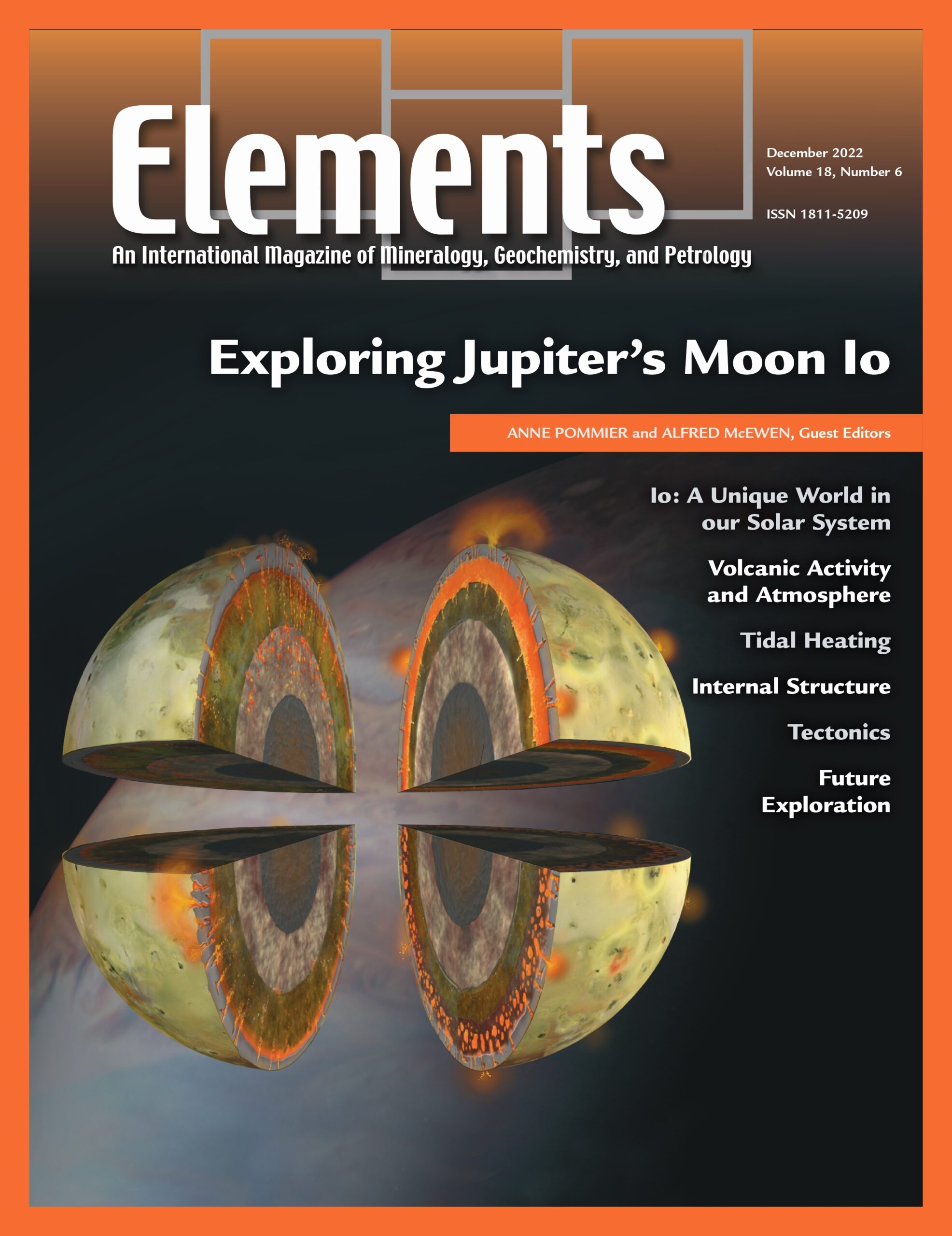
Cascadia Subduction Zone, August 2022, Vol. 18, No. 4
June 28, 2024
Biomagnetism, August 2023, Vol. 19, No. 4
June 28, 2024Exploring Jupiter’s Moon Io, December 2022, Vol. 18, No. 6
$20.00
Jupiter’s moon Io is the best place to understand a fundamental planetary process that shaped terrestrial planets, icy ocean worlds, and extrasolar planets: tidal heating. Io is the most tidally heated world in our Solar System and may contain a magma ocean.
Exploring Jupiter’s Moon Io
December 2022, Vol. 18, No. 6
Jupiter’s moon Io is the best place to understand a fundamental planetary process that shaped terrestrial planets, icy ocean worlds, and extrasolar planets: tidal heating. Io is the most tidally heated world in our Solar System and may contain a magma ocean. Io’s spectacular volcanic plumes sustain the atmosphere and feed the giant magnetosphere of the Jovian system. The lavas covering its surface reflect heat-pipe tectonics, which is analogous to the volcanically hyperactive youth of all rocky planets. Io is the ideal planet-scale laboratory to study the intertwined processes of tidal forcing, extreme volcanism, and atmosphere–magnetosphere interactions. This issue of Elements reviews our knowledge of Io, emphasizing on its composition, interior dynamics, and surface processes, while also sharing perspectives for future missions.
Why You’ll Love Elements Magazine:
- Expert Contributors: Articles written by renowned researchers in the field of geoscience.
- Engaging Content: Join a community of readers who are passionate about Elements.
- Exceptional Quality: Each issue is printed on high-quality paper with stunning visuals and detailed illustrations that bring complex scientific concepts to life.
Order your copy of the December 2022 issue of Elements magazine today and delve into exploring Jupiter’s moon Io.
Related products
-
Phosphates And Global Sustainability, April 2008, Vol. 4, No. 2
$20.00Phosphorus is a unique element: it is essential to the existence of all living forms, and as such controls biological productivity in many terrestrial and marine environments; but when in excess, it leads to uncontrollable biological growth and water-quality problems. This has become a common environmental issue, resulting from our careless use of phosphorus in agriculture, yet phosphate ore deposits, from which fertilizers are produced, are a finite natural resource.
-
Medical Mineralogy And Geochemistry, December 2007, Vol. 3, No. 6
$20.00Medical mineralogy and geochemistry is an emergent, highly interdisciplinary field concerned with both normal and pathological interactions between minerals or amorphous inorganic solids and biomolecules or cells within the human body, and the transport and fate of prions and protein toxins in the soil environment. Prior research has, appropriately, focused on the complex genetic and molecular biological aspects, but there is a growing recognition of the vital need for understanding the surface and bulk properties and reactivities, especially at the challenging nanoscale characteristic of biomacromolecules and biominerals.
-
Energy: A Geoscience Perspective, June 2007, Vol. 3, No. 3
$20.00The issue of energy resources in the future may be one of the most important in the 21st century. Future climate change and the ways to abate it while still supplying needed energy will impact future political relations, world economics, human health, and the environment.




